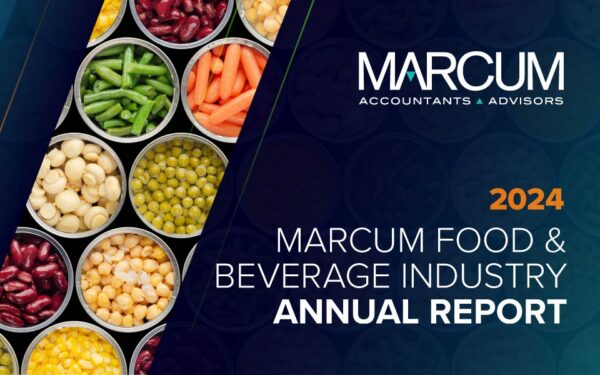
The food and beverage industry has always been a fundamental part of the economy, but during the pandemic it was declared “essential.”
Over the past few years, it also has been an industry in flux amid change and challenges, managing a pandemic, facing the headwinds of inflation and innovating as more purchases shift online. F&B companies have diversified sourcing, boosted revenues, increased wages, sometimes revamping technology and often, although not as much as possible, tapping tax benefits and incentives. Revenues are up, optimism is on the rise and change is everywhere even as supply chain struggles and a labor shortage persist. With the peak of the pandemic behind us, executives are facing a new era and eyeing the future. It’s a watershed moment for the industry with companies and customer habits changing, sourcing becoming more flexible, data becoming a driver of efficiency, M&A going strong, and efforts to innovate and boost margins as competition sharpens.
We can’t think of a timelier moment to present Marcum’s first Food and Beverage industry survey, providing a view of the state of the industry from priorities to problems and solutions. We would like to thank the many executives who provided data and comments as recently as October. We are heartened by the optimism, signs of growth and solutions even as we are aware of ongoing struggles to find skilled labor and tame the dragons of rising costs, dwindling supplies and labor shortages.
FROM OUR RESPONDENTS
The F&B survey asked our respondents their thoughts on growth opportunities and greatest challenges. Here’s a snapshot of their thoughts.
Key Findings
Revenue
71% Reported revenue rose from 2021 to 2022
69% Project revenue rising over the next 12 months
64% Have a positive/very positive outlook for the industry over the next year project
Attracting & Retaining Labor
45% Reported workforce growth over the last 12 months
46% Project workforce growth over the next 12 months
49% Anticipate securing skilled labor to be among the greatest challenges of 2022/2023
72% Plan to increase average compensation including benefits over the next 2 years
58% Are increasing wages to attract and retain skilled labor
38% Are offering bonuses to attract and retain skilled labor
54% Are planning to improve work life balance
Tax Opportunities
34% Are NOT taking advantage of various tax incentives
60% Are NOT taking advantage of employee retention tax credits
Challenges & Strategies
69% Anticipate inflation, rising commodity and other costs among the greatest challenges
72% Place product/service expansion and innovation as their top business strategy
32% Place geographic expansion as their top business strategy
63% Say the pandemic permanently changed the way they manage their supply chain
62% Plan to address inflation in the coming year by reducing expenses
57% Plan to address inflation in the coming year by raising prices
55% Are not confident that their technology is protected from cyber threats
52% Are unsure their IT/technology can handle current and future goals
66% Experiences shipping delays as a global supply chain issue
35% Place geographic expansion as their top business strategy
Insights & News
Contacts
Select the region to view contacts.




















